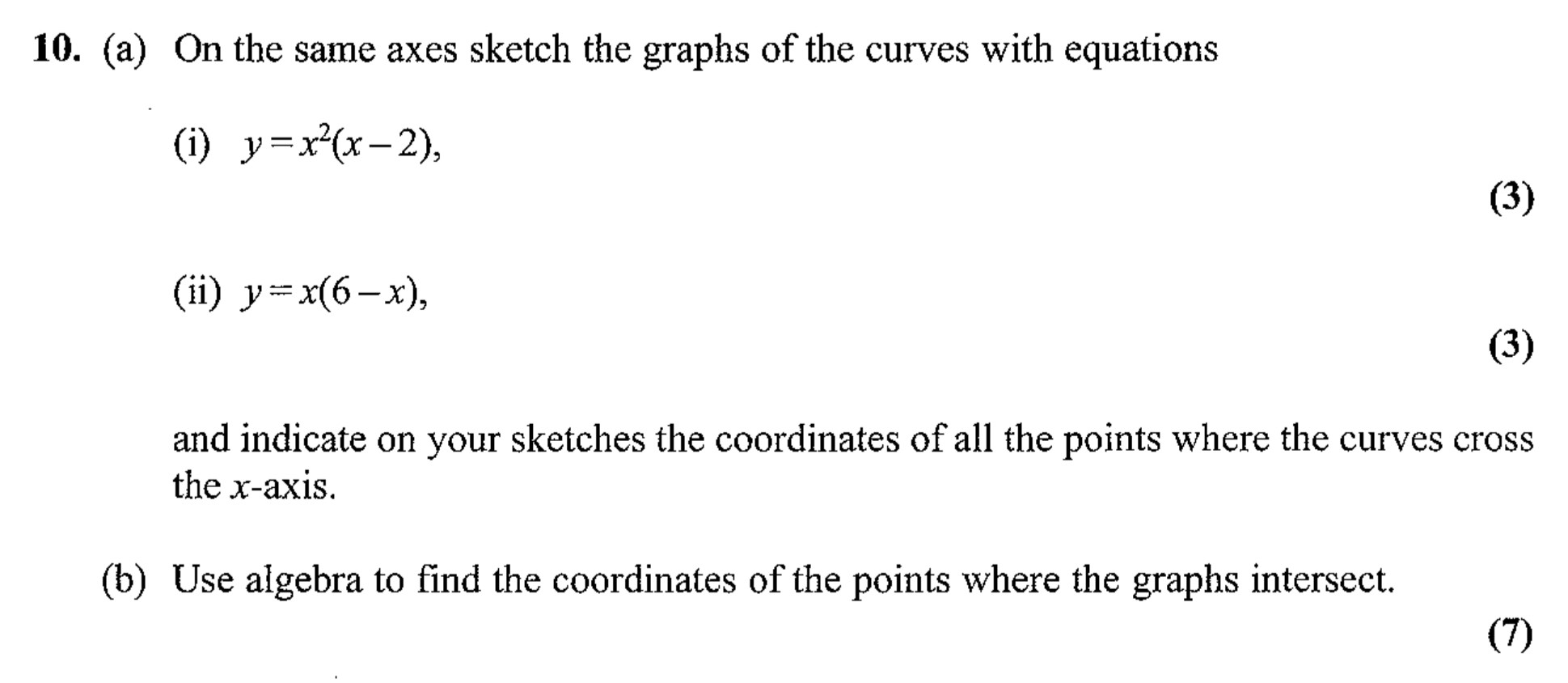Photo AI
On the same axes sketch the graphs of the curves with equations (i) $y = x^2(x - 2)$, (ii) $y = x(6 - x)$, and indicate on your sketches the coordinates of all the points where the curves cross the $x$-axis - Edexcel - A-Level Maths Pure - Question 10 - 2007 - Paper 2
Question 10

On the same axes sketch the graphs of the curves with equations (i) $y = x^2(x - 2)$, (ii) $y = x(6 - x)$, and indicate on your sketches the coordinates of all th... show full transcript
Worked Solution & Example Answer:On the same axes sketch the graphs of the curves with equations (i) $y = x^2(x - 2)$, (ii) $y = x(6 - x)$, and indicate on your sketches the coordinates of all the points where the curves cross the $x$-axis - Edexcel - A-Level Maths Pure - Question 10 - 2007 - Paper 2
Step 1
(i) $y = x^2(x - 2)$
Answer
To sketch the graph of the equation , we first note its critical points. The roots of the equation are found by setting it to zero:
This implies:
- (which gives )
- (which gives )
Thus, the graph crosses the x-axis at the points (0, 0) and (2, 0). Since this is a cubic function and the leading term is positive, the graph will open upwards, touching the x-axis at these points.
Step 2
(ii) $y = x(6 - x)$
Answer
For the equation , we find the roots similarly:
This gives us:
- (yielding )
So, the graph crosses the x-axis at the points (0, 0) and (6, 0). This is a quadratic function that opens downwards, starting from (0, 0) and reaching its maximum at (3, 9) before returning to (6, 0).
Step 3
Use algebra to find the coordinates of the points where the graphs intersect.
Answer
To find the intersection points, equate the two equations:
Rearranging gives:
Factoring out , we have:
Simplifying the expression in the bracket:
Now we can apply the quadratic formula:
Here, , , and :
Thus:
- (solution)
- (also a solution)
To find the corresponding y-values, substitute these x-values:
- For :
- For :
Finally, the points of intersection are (3, 9) and (-2, -16).
